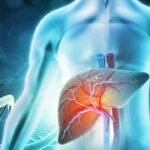The liver is one of the body’s most vital organs, responsible for detoxifying harmful substances, aiding in digestion through bile production, and regulating essential metabolic processes. When the liver becomes damaged, due to conditions like fatty liver disease, excessive alcohol consumption, hepatitis, or drug toxicity, it struggles to perform these critical functions. Fortunately, the liver is known for its remarkable ability to heal itself if given the right support. Recognizing the signs of liver healing is essential for those on the road to recovery. This article explores the key indicators that your liver is healing after damage and how you can support this regenerative process.
Improved Energy Levels
One of the earliest signs of liver damage is persistent fatigue. A compromised liver cannot efficiently process toxins and nutrients, leaving you feeling constantly tired and drained. As the liver starts to heal, one of the first improvements you might notice is an increase in your energy levels. Daily activities may start to feel less exhausting, and your overall stamina may improve. This boost in energy is a promising sign that your liver is becoming more effective at performing its metabolic and detoxification roles.
Return of Appetite and Better Digestion
The liver plays a crucial role in digestion by producing bile, which helps in breaking down fats and absorbing nutrients. When the liver is damaged, bile production can be disrupted, leading to digestive discomfort, bloating, and loss of appetite. As healing progresses, you may find your appetite returning to normal and digestion becoming more comfortable. You might also notice a reduced feeling of fullness or nausea after meals. These changes indicate that your liver is beginning to function properly and that your digestive system is back on track.
Healthier Skin and Brighter Eyes
Skin and eye appearance can be a direct reflection of your liver’s condition. In cases of liver damage, toxins can accumulate in the bloodstream, sometimes causing symptoms like yellowing of the skin and eyes (jaundice), rashes, or itchy skin. As the liver heals and begins to filter toxins more effectively, these symptoms often start to subside. Your skin may look clearer and healthier, and the whites of your eyes may regain their brightness. This visible improvement is a strong indicator that your liver’s detoxifying abilities are being restored.
Stabilized Body Weight
Liver damage can interfere with how the body stores and metabolizes fat, often leading to unintentional weight gain or loss. Fatty liver disease, for instance, is associated with excess fat accumulation in the liver. When the liver starts to recover, you may notice your weight beginning to stabilize. If you are following a liver-friendly lifestyle—such as eating nutritious foods, avoiding alcohol, and exercising regularly—your body will begin to regulate weight more naturally. This gradual return to a healthy weight is another encouraging sign of liver recovery.
Reduction in Abdominal Pain and Bloating
A damaged or inflamed liver can cause discomfort or pain in the upper right side of the abdomen. In more advanced liver disease, fluid retention in the abdominal cavity, known as ascites, can lead to bloating and swelling. As your liver begins to heal and inflammation decreases, you may notice less abdominal pain and a reduction in bloating. These physical improvements often reflect the liver’s reduced workload and better regulation of fluid balance in the body.
Improved Liver Function Test Results
While many signs of healing can be felt or seen, one of the most accurate ways to track liver health is through blood tests. Liver enzymes such as ALT (alanine transaminase) and AST (aspartate transaminase) are commonly elevated during liver inflammation or damage. As the liver heals, these enzyme levels usually begin to decrease. Additional indicators like bilirubin, albumin, and clotting factors may also return to normal ranges. Regular monitoring through blood work can provide clear, measurable evidence that your liver is healing.
Take a Liver Function Test at Home
Enhanced Mental Clarity and Mood Stability
Liver dysfunction can sometimes lead to a buildup of toxins that affect brain function—a condition known as hepatic encephalopathy. This can result in confusion, forgetfulness, mood swings, and poor concentration. As liver health improves and detoxification resumes normally, many people experience better mental clarity, improved memory, and a more stable mood. These cognitive and emotional improvements are signs that the liver is once again effectively filtering waste and maintaining a healthy internal environment.
Lower Levels of Inflammation
Inflammation is a common feature of liver disease, whether due to infection, fat buildup, or toxins. While you may not always feel inflammation directly, it can be detected through certain blood markers such as C-reactive protein (CRP) and liver enzyme levels. As liver function improves and inflammation subsides, you might notice an overall feeling of wellness, less joint or muscle pain, and improved immunity. Decreasing inflammation supports not only liver recovery but also better health across multiple body systems.
How to Support Liver Healing
Healing your liver is a gradual process that requires commitment to healthy habits. Here are some effective ways to support your liver’s recovery:
- Avoid alcohol and smoking, which can stress or further damage the liver.
- Eat a nutrient-dense diet with plenty of fruits, vegetables, whole grains, and lean proteins.
- Exercise regularly to reduce fat accumulation in the liver.
- Stay hydrated to help flush toxins from the body.
- Limit processed foods and sugar, which can worsen fatty liver.
- Take medications only as prescribed, and avoid over-the-counter drugs that may harm the liver without medical guidance.
It’s also important to keep up with routine medical checkups and follow your doctor’s advice, especially if you’re recovering from liver disease or managing a chronic liver condition.
Conclusion
The liver’s ability to regenerate is one of its most remarkable features. Whether you’re recovering from fatty liver disease, alcohol-induced damage, or another liver condition, the signs of healing, such as improved energy, digestion, appearance, and lab results, are encouraging milestones. Be sure to review your lab report details regularly, as they offer clear insights into your liver’s recovery progress. While healing takes time and effort, recognizing these positive changes can provide hope and motivation. With the right support, your liver can make a strong comeback, helping you enjoy a healthier and more vibrant life.






